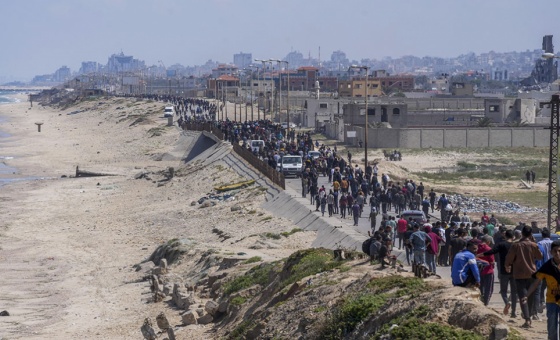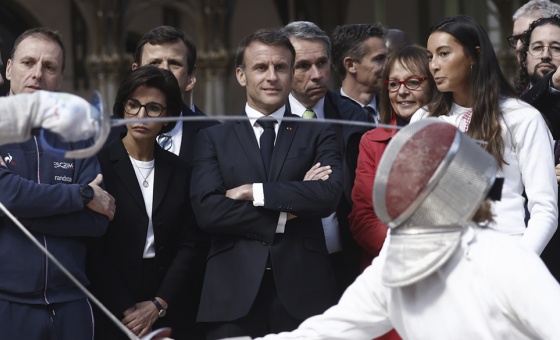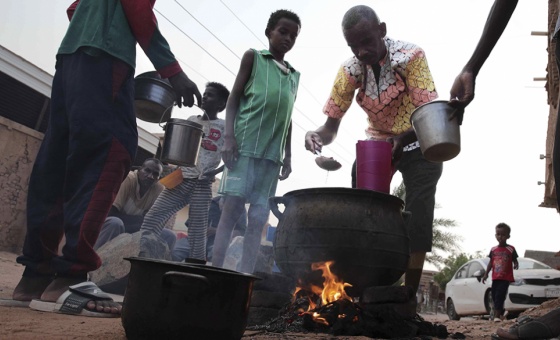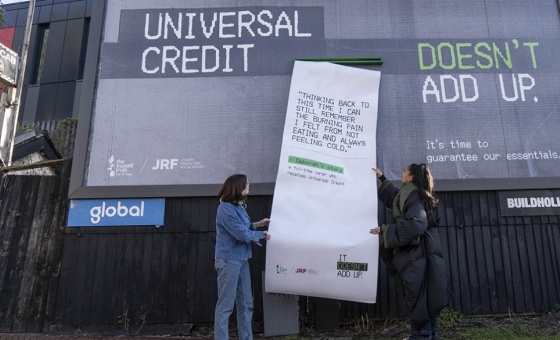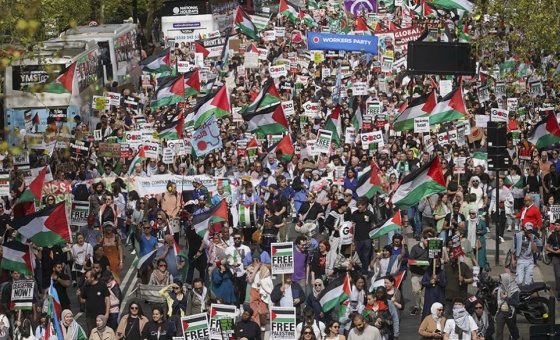This is the last article you can read this month
You can read more article this month
You can read more articles this month
Sorry your limit is up for this month
Reset on:
Please help support the Morning Star by subscribing here
HALF a century ago this week on the night of June 21 1964 three brave young civil rights’ workers, James Earl Chaney, Andrew Goodman and Mickey Schwerner, were shot dead at close range by a police-led lynch mob.
Many of the murderers were members of the Mississippi White Knights of the Ku Klux Klan in the little town of Philadelphia, Mississippi.
So who were these murder victims and why did they die?
Chaney was born in Meridian, Mississippi in 1943. At the age of 15, he and other black high-school students started wearing NAACP (National Association for the Advancement of Coloured People) badges. It was a brave act. His segregated school suspended him.
In late 1963, he signed up with the Congress of Racial Equality (Core) in Meridian. He organised voter education classes, introduced Core workers to local church leaders and used his local knowledge and contacts to help visiting Core volunteers.
In 1964 he organised a meeting between Mickey Schwerner, local leader of Core, with leaders of the Mt Nebo Baptist Church. Schwerner talked to the church members and encouraged them to use the church for voter education and registration.
Schwerner was white and Jewish. Born in New York in 1939, he studied sociology at Columbia University where he became involved in the struggle for civil rights.
He joined and later led a Core group on the Lower East Side of Manhattan. With his wife Rita he volunteered to work for National Core in Mississippi.
As soon as they reached Mississippi the Schwerners were targeted by the Ku Klux Klan.
This didn’t stop them establishing a Core community centre in Meridian.
Goodman was also white, Jewish and from New York. He too was born in 1939. His family and community had a long tradition of social justice. After college and a brief career as an actor, he switched to anthropology and his political awareness grew.
In 1964, Goodman volunteered to work on the Core Freedom Summer project to register blacks to vote in Mississippi.
By mid-June, Goodman joined Schwerner and Chaney in Mississippi, but already some unsavoury southern folk had their eye on these three young men.
The Mississippi State Sovereignty Commission was strongly opposed to integration and civil rights. It paid agents to spy on anyone, especially northerners, suspected of activism.
Records, kept secret until opened by court order in 1998, revealed the state’s deep complicity in the murders of Goodman, Schwerner and Chaney.
State investigator AL Hopkins passed on information about the three men, including car registration numbers, on to the local sheriff who was deeply implicated in the murders.
On the morning of June 21, 1964, the three men set out for the little Mississippi town of Philadelphia where they were to investigate the recent burning of a black church helping with voter registration.
By the end of the day the three men would be cut down by a police-led Klan lynch mob.
Their murders sparked national outrage which forced the Federal Bureau of Investigation (FBI), itself racked by racism and close to many of the white supremist organisations in the southern states, to reluctantly start an investigation.
J Edgar Hoover had no sympathy with civil rights groups and activists. President Lyndon Johnson had to use indirect threats of political reprisal to force Hoover to investigate.
It took FBI agents 44 days to find the three bodies in an earthen dam near the murder site.
In the early 1960s, Mississippi along with most of the US south was virtually an apartheid state with total segregation and no rights or democracy for black citizens.
Local politicians defied and ignored Supreme Court rulings. The white Mississippi establishment used bombings, murders, vandalism and intimidation to discourage local blacks demanding civil rights.
One of the most powerful racist groups was the 10,000-strong White Knights of the Ku Klux Klan. The Klan was determined that blacks should not get votes, equality in education or anything else.
Schwerner and Chaney spoke to the congregation at Mount Zion Methodist church in Longdale, Mississippi. Their speech was about setting up a freedom school and encouraging blacks to register to vote.
The Klan’s angry response was to burn down the church and beat up members of the congregation.
So it was that on that fateful day Chaney, Goodman and Schwerner set off to investigate the destruction of the church. They understood the dangers and warned comrades “if we’re not back by 4pm start looking for us.”
Their decision would prove to be fatal. As they entered the Philadelphia city limits their station wagon had a flat tyre.
Deputy Sheriff Cecil Ray Price called up the highway patrol. When they arrived they promptly arrested the three civil rights campaigners.
It was 10pm before the three were released. As they drove off they realised they were being followed by a sheriff’s vehicle, a highway patrol car and other packed vehicles.
While they were in jail a lynch mob had been assembled and three murders had been planned.
Just two weeks before the murders nearly 300 White Knights gathered near Raleigh, Mississippi, to hear Imperial Wizard Bowers warn Klan members about the “nigger-communist invasion of Mississippi.”
Goodman and Schwerner were shot at point-blank range by Klan member Alton W Roberts. Roberts also shot Chaney in the head after another man James Jordan shot him in the stomach.
After the three men were killed, their bodies were loaded into their station wagon and were driven to an earth dam where Herman Tucker was waiting for the arrival of the lynch mob. He buried the bodies using a bulldozer. It had all been planned earlier in the day.
After the bodies were buried, Sherriff Price told the group: “Well boys, you’ve done a good job. You’ve struck a blow for the white man. Mississippi can be proud of you. You’ve let those agitating outsiders know where this state stands. Go home now and forget it.”
FBI director Hoover initially ordered a small local search but Attorney General Robert Kennedy had other ideas. He sent in 150 federal agents from New Orleans. The FBI eventually offered a $25,000 reward — worth about $190,000 today.
Mississippi officials resented the outside attention and continued the cover-up. County Sheriff Lawrence Rainey told the media: “They’re just hiding and trying to cause a lot of bad publicity for this part of the state.”
The Mississippi governor Paul Johnson threw in a red herring by suggesting that “they could be in Cuba.”
Finally five months later the FBI accused 21 Mississippi men of conspiracy to injure, oppress, threaten and intimidate Chaney, Goodman and Schwerner.
Still the Mississippi state officials refused to prosecute the killers for murder. The federal government charged 18 of the accused — not with murder but the much lesser crime of conspiring to deprive the three of their civil rights.
Those found guilty on October 20, 1967 were Cecil Price, Klan Imperial Wizard Samuel Bowers, Alton Wayne Roberts, Jimmy Snowden, Billey Wayne Posey, Horace Barnett and Jimmy Arledge.
Less than harsh sentences ranged from three to 10 years. Exhaustive appeals meant the seven did not go to jail until March 1970. All were out by 1976.
Sheriff Rainey was acquitted. Two of the defendants, EG Barnett, a candidate for sheriff, and Baptist minister Edgar Ray Killen, had been strongly implicated in the murders by witnesses but the jury came to a hung verdict — a lone juror stating she “could never convict a preacher.” The federal prosecutor decided not to retry them.
In 1989, on the 25th anniversary of the murders, the US Congress honoured the three murdered men. Senator Trent Lott and the rest of the Mississippi delegation refused to vote for it.
In 2005, over 40 years after the murder, a Mississippi grand jury finally indicted Killen on three counts of manslaughter, not murder. He was sentenced to three consecutive terms of 20 years.
It was the first and only time the state of Mississippi, rather than the federal authorities, took action against any of the racists involved in the killings.
National outrage over the murders swayed public opinion and this was an important factor in the introduction of the Civil Rights Act of 1964 and the Voting Rights Act of 1965.
Today in the southern states of the US as well as here in Europe racist ideas are still to be heard. Brave people are still fighting racism in all its forms, and wherever those battles are fought the names of Chaney, Goodman and Schwerner live on as an inspiring example to us all.
